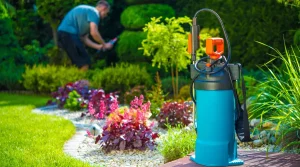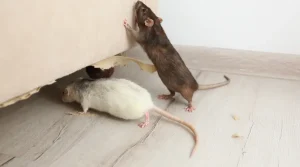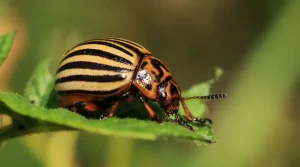As the seasons shift, various pests find their way into our homes and gardens. Each time of the year, from mosquitoes and flies to stinging insects, presents challenges. Dealing with these pests is an ongoing battle as they adapt to changing conditions. However, by understanding their patterns and behaviors, We may take proactive efforts to protect our houses safe. This guide will explore why pests emerge at specific times and provide practical tips to keep them at bay year-round.
Thousand Oaks Pest Control is the premier choice for pest management services in Thousand Oaks, CA, and nearby areas. Our commitment to excellence is evident in our meticulous research methods and years of industry experience.
Understanding Seasonal Pests:
Seasonal pests become more prominent during certain times due to shifts in weather and food availability. These changes influence their life cycles and behaviors, causing them to appear and disappear with the passing seasons. Whether spring, summer, or fall, each season brings its array of pests, all part of nature’s ever-evolving rhythm.
Effective Pest Prevention Methods:
While various ways to combat pests exist, integrated pest management (IPM) is often the most effective approach. IPM focuses on preventing pests from entering our living spaces and disrupting their preferred environments. It incorporates natural deterrents and enemies of pests, minimizing reliance on harmful chemicals. By employing IPM strategies, we can find lasting solutions to pest issues without compromising our health or the environment.
12 Tips for Seasonal Pest Prevention and Control:
1. Maintain a Clean Environment: Eliminate potential food sources for pests by thoroughly cleaning your home and paying special attention to floors, countertops, and garbage bins. Regularly vacuum carpets and rugs, wipe down surfaces, and sweep floors to remove crumbs and spills that may attract pests. Ensure that food is stored properly in sealed containers to prevent access.
2. Seal Entry Points: To prevent pests from invading your house, find and plug any holes. or cracks in walls, windows, doors, and foundations. Use weather stripping and caulking to seal small openings, and consider installing door sweeps to block entry points at the bottom of doors.
3. Proper Food Storage: Store food in airtight containers to deter ants and rodents from accessing it. Avoid leaving food on countertops or in open packaging, as this can attract pests. Keep pantry shelves clean and organized to reduce hiding places for pests.
4. Trim Vegetation: Keep outdoor foliage neatly trimmed to reduce hiding spots for mosquitoes and ticks. Trim back bushes, shrubs, and trees away from your home, especially around doors and windows. Remove the overgrown foliage and rubbish from your yard to remove potential habitats for pests.
5. Remove Standing Water: Eliminate stagnant water sources to prevent mosquito breeding. Regularly inspect your property for areas where water may collect, such as clogged gutters, birdbaths, and flower pots. Empty and clean containers that collect water and ensure proper drainage around your home’s foundation.
6. Install Screens: Use screens on Use doors and windows to keep flying insects out of your home. Repair or replace any damaged screens, and consider installing screen doors for added protection. Keep windows and doors closed or screened whenever possible, especially during peak pest activity.
7. Use Natural Repellents: Plant insect-repelling herbs like basil and lavender around your home. These plants emit natural scents, such as mosquitoes and flies, that deter pests. Consider placing potted herbs near entry points or outdoor sitting areas to help repel insects.
8. Dispose of Garbage Properly: Keep trash bins tightly sealed and dispose of garbage regularly. Use durable, lidded trash cans with secure lids to prevent pests from accessing food waste. Clean trash bins regularly to remove odors and residue that may attract pests.
9. Regular Pest Inspections: Schedule routine inspections with Professional pest control services will detect and address issues early. Pest control professionals can detect symptoms of pest activity, such as droppings, gnaw marks, or nests, and recommend appropriate treatments or preventive measures.
10. Use Traps and Baits: Deploy traps and baits strategically to capture pests without using chemicals. Place traps where pests are known to frequent, such as along walls, near entry points, or dark corners. Choose traps and baits that are safe and effective for the specific pests you are targeting.
11. Maintain Outdoor Lighting: Opt for yellow or LED lights outdoors to minimize attraction to flying insects. These types of lights emit wavelengths that are less appealing to pests like mosquitoes and moths. Consider installing motion-activated or timed lighting to reduce unnecessary illumination when not needed.
12. Consult with Experts: Seek advice from pest control professionals for persistent pest problems. Pest control professionals can make tailored suggestions depending on the specific pests present in your area and the unique characteristics of your home. They also provide continual monitoring and maintenance. keep pests under control effectively.
Common Pests in California:
Various pests emerge throughout the year in California due to regional climate variations. Mosquitoes are prevalent in warmer months, while flies are more active in spring and summer. Stinging insects like bees and wasps may become problematic in late summer and early fall.
Prevention Tips for California’s Common Pests:
Combat seasonal pests in California by implementing specific preventative measures. For mosquitoes, eliminate standing water and use repellents. Keep outdoor areas clean and use fly traps for flies. Control stinging insects by removing nests and avoiding sweet foods and drinks outdoors.
You can enjoy a pest-free home year-round by staying proactive and implementing the right pest-prevention strategies. From maintaining cleanliness to utilizing natural repellents, you can take plenty of steps to keep seasonal pests at bay. Prevention is vital, so begin adopting these steps immediately. protect your home from unwanted guests tomorrow.




